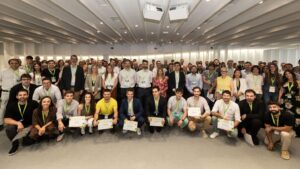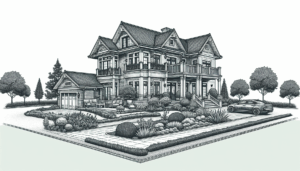A team from the Spanish National Research Council (CSIC) has created a robot in the shape of a dog equipped with artificial intelligence (AI) that can serve as a guide for dependent or disabled people.
Among its many features, it stands out for its ability to unequivocally distinguish between an object and a person, thanks to its machine learning system and the camera built into its head. By being connected to Google, it can access real-time information such as traffic conditions and communicate it to its owner or others through voice.
Although its metallic appearance and jerky, precise movements make it look less like an animal, its creators had guide dogs in mind when they began thinking about the possibilities of Tefi, as this robot was named in honor of the CSIC institute where it was born: the Institute of Physical and Information Technologies (ITEFI) in Madrid.
The robot has GPS for outdoor navigation and uses tools like Google Maps to guide to different places, such as shops, restaurants, and hospitals. Additionally, researchers have implemented algorithms of computer vision to aid its navigation and the identification of specific objects, such as traffic signs, traffic lights, streets, people, chairs, tables, computers, or QR code information.
Apart from its usefulness in guiding the blind, its creators highlight its potential mainly in assisting elderly people with dementia or Alzheimer’s patients.
“In addition to notifying its owner of their medical appointment time, Tefi is capable of guiding them directly to the consultation room using only a building layout that it can access if accessible. Thanks to its connection to the mobile phone network, the robot can also request a taxi so that the patient does not have to worry about anything,” explains Robotics doctor Gerardo Portilla, the father of this robotic dog, as he gives orders and shows the different tools it has.
Its quadrupedal shape makes it suitable for moving in any environment, even on stairs, and it can do a backflip. “It is very robust and dynamic in rugged environments and much more economical than a guide dog. The automatic driving for guidance has already been developed, as well as the necessary AI for object detection, people, and signaling. It can communicate verbally with the person to perform requested tasks and can also describe what it sees through its camera and the information it receives from the internet,” Portilla points out.
So far, researchers have carried out different navigation tests indoors at the institute and have confirmed that the robot is capable of guiding the user to different areas of the building with voice commands. Scientists hope to start testing soon how Tefi navigates outdoors, where the environment is more dynamic.
“The application of this robot is primarily social, and that is what sets it apart from the dog from the American company Boston Dynamics, which was designed for industrial purposes. Obviously, it will never replace an animal, which provides companionship and affection, but the range of possibilities and applications is quite broad,” says Francisco Montero de Espinosa, a researcher at the CSIC in the same center.
Although Tefi’s design is still preliminary, researchers hope to soon install sensors that can detect warning signs, such as high blood pressure or the presence of volatile chemicals in a home.
“The machine-human and machine-machine communication is the distinctive feature of this robot. To fully realize its potential, it is key to make it learn behaviors on its own, something we are currently focused on,” concludes Montero de Espinosa.
Rights: Creative Commons.
Source: Sinc Agency.
Source: MiMub in Spanish












